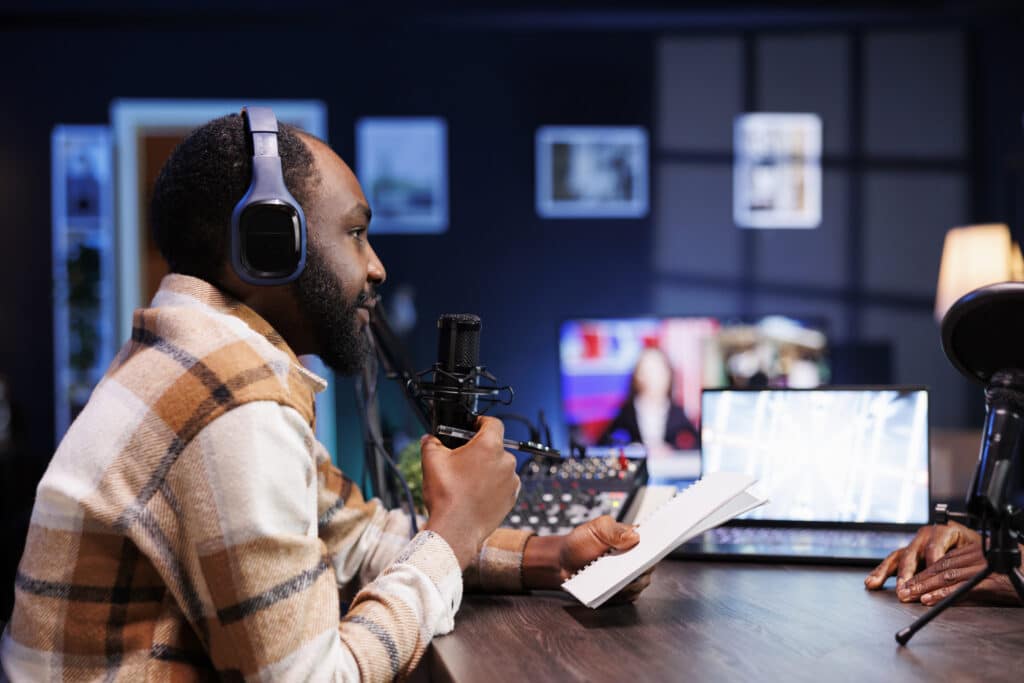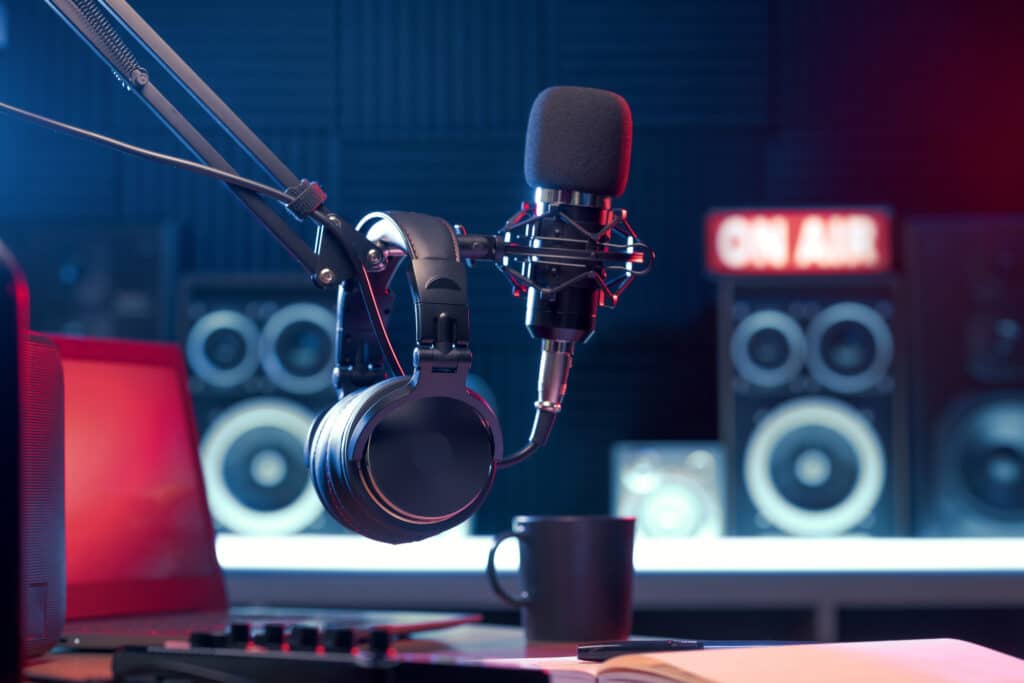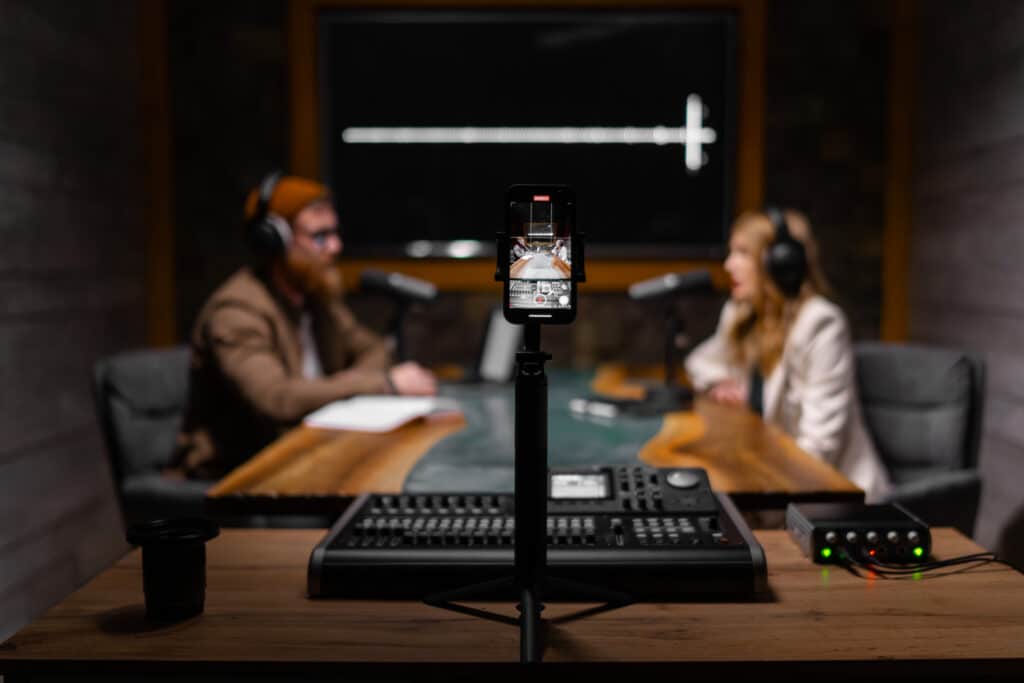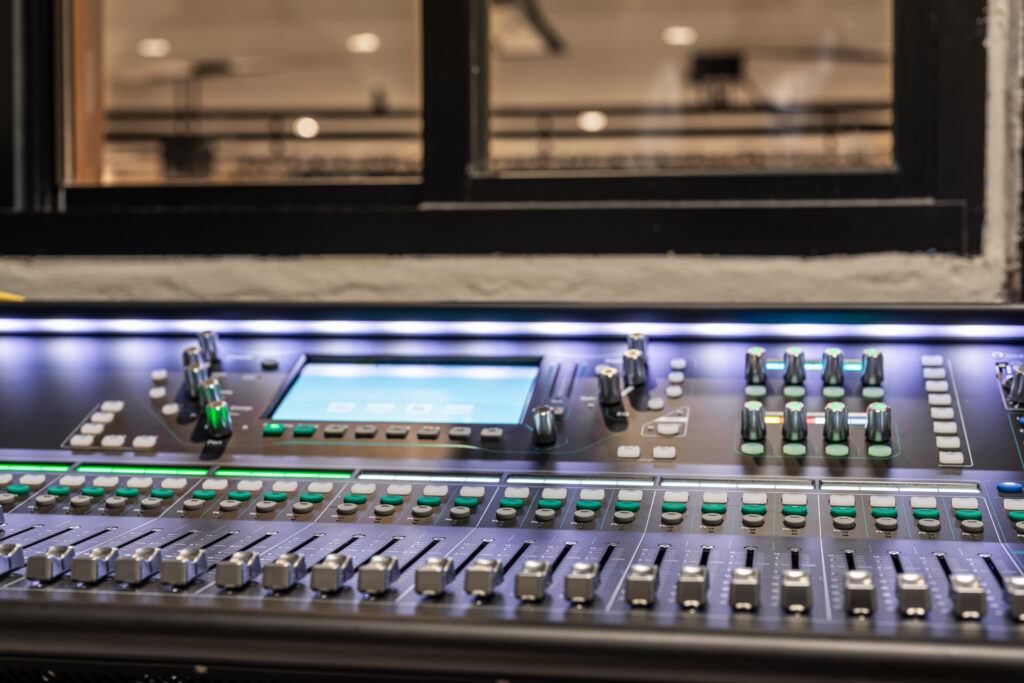Podcast Editing Mistakes That Turn Listeners Away
09/05/2025
Podcast Editing Mistakes (and How to Fix Them)
Podcasting has exploded over the last few years, with more than 460 million listeners worldwide as of 2023 and projections showing that number will grow to over 500 million by 2024 (DemandSage). With that kind of audience, the competition for attention is fierce.
The reality is that people are no longer just looking for content. They are looking for content that sounds good, feels professional, and respects their time. Even the best ideas fall flat when sloppy editing makes a podcast hard to listen to.
Editing is where you take raw conversation and turn it into something smooth, engaging, and worth sticking around for. Done right, it builds trust and keeps your audience hooked. Done wrong, it sends people straight to another show, or makes your show a one hit wonder.
Here are the most common podcast editing mistakes that quietly push listeners away and how to fix them so your episodes sound sharp, intentional, and professional.

Inconsistent audio levels
Imagine your podcast intro coming in loud and punchy, the host sounding fine, but then the guest is whispering from another room. A minute later, the music blares again and drowns everyone out. Most people will not keep adjusting the volume. They will just leave.
A survey from NPR found that listeners cite poor sound quality as one of the top reasons they abandon a podcast (NPR & Edison Research). Inconsistent audio levels are a main culprit.
The fix is simple. Normalize your audio so all voices sit at a consistent level. Use compression to control peaks and valleys. Always check your music and sound effects so they blend instead of overpowering. Think of it like a conversation in a (small) coffee shop. It should be comfortable and even.
Leaving in too many ums and pauses
We all say “um” and “uh.” Pauses are part of real conversations. But when they happen every few seconds, it feels unpolished and unprepared. Listeners might forgive a few, but too many can make even strong content sound like a struggle.
Research from Podnews shows that listener retention drops sharply in the first five minutes if the audio feels messy or unstructured.
Trim unnecessary fillers, awkward silences, and repeated starts. Leave in enough to keep it human but clear out the clutter so the message shines through.
Over-editing
Some editors go the other way and cut so aggressively that every breath, laugh, or pause disappears. What you are left with is a choppy and unnatural conversation.
One of the biggest appeals of podcasts is that they feel authentic. Over-editing strips away that intimacy. It is like having a dinner conversation where every laugh is muted and every pause is erased. It feels staged.
The solution is balance. Keep the moments that show personality. Let your guest laugh. Let the host pause to think. Editing should enhance, not erase, the human side of your show.

Ignoring background noise
Background noise is one of the fastest ways to ruin the listening experience. Think of how distracting it is to hear traffic, a fan buzzing, or a dog barking during an interview. Even subtle hums make your podcast sound less professional.
Podnews reported that sound quality is the number one factor that determines whether someone will continue listening to a new episode.
Record in a quiet environment. Turn off fans, close windows, and let your guests know to do the same if you are doing a remote session. Use noise reduction tools carefully, since overdoing it can distort voices. If you are serious about long-term podcasting, invest in a decent microphone. It does not need to be the most expensive one, but it should beat your laptop’s built-in mic.
Poor music or sound effect choices
Music sets the tone. The right track creates energy, builds brand recognition, and gives your podcast personality. The wrong track does the opposite.
Jarring music, loud transitions, or effects that do not fit the vibe can pull your audience out of the story. On top of that, using unlicensed music can create legal problems and even get your episodes removed.
Choose music that matches your brand. Keep it at a level that supports the conversation instead of fighting with it. Fade it in and out smoothly. And always make sure your tracks are licensed. A consistent audio brand builds trust and professionalism. If this is over your head, you should consider working with a professional podcast production company to make sure you are safe!
No editing for pace or flow
Many podcasts lose listeners not because the content is bad but because the pacing is off. Tangents drag on. Guests repeat themselves. The conversation takes forever to get to the point.
Edison Research found that 41 percent of listeners said “rambling or going off-topic” was one of the main reasons they stop listening to a podcast (Edison Research).
Think like a storyteller. Cut anything that does not move the conversation forward. Tighten your intro so you hook people right away. Remove fluff so the listener always feels like they are moving toward something valuable.

Leaving too much audio in the final cut
This mistake is easy to miss. Many podcasters think more is better, so they keep every tangent, repeated point, and side conversation. The result is an episode that feels long and meandering.
Listeners do not want to sift through an hour of audio to find the good parts. They want you to deliver value directly. A study from Spotify showed that podcasts with shorter, tighter episodes often see higher completion rates, especially among new listeners.
Be ruthless with your edit. Cut repetitive sections and tangents that do not serve the core message. Keep your best moments and tighten the rest. Think of it as curating instead of cutting.
Skipping the final review
After hours of editing, it is tempting to upload and be done with it. But skipping the final listen is how mistakes slip through. Maybe there is a glitch, an awkward transition, or a typo in the show notes. Small things can hurt the credibility you have worked hard to build.
Always do one full listen before publishing. If possible, listen on more than one device—your headphones, your car speakers, and your phone. This helps you catch issues that only show up in certain environments.
Why this matters (and the numbers to prove it)
Editing mistakes do not just annoy listeners. They cost you audience growth.
- 51.1 percent of podcast consumers expect radio-level quality. Poor audio makes them switch shows quickly (Castmagic)
- More than 70 percent of listeners finish most or all of the episodes they start, but only if the audio experience is clean and engaging (DesignRush)
- Podcasts that publish consistently for at least six months see 320 percent better audience growth than those that do not (Pro Podcast Solutions)
- The average podcast gets about 27 listens per episode. The top one percent see more than 3,200. One of the biggest differences is whether the audio holds attention from start to finish (Podcast Launch Strategy)
- Surveys show that poor sound quality and off-topic chatter are two of the top reasons listeners hit stop (Podknows)

How to track improvement
If you want to know whether your editing is making a difference, do not guess. Look at your analytics.
Apple Podcasts Connect shows you where listeners drop off in each episode (Apple Podcasters).
Podbean reports show listener retention so you can track whether more people are finishing your episodes (Podbean).
A healthy listen-through rate is around 90 percent. If people are dropping earlier, chances are your edits need tightening (Descript).
Tools like Bumper measure audience churn and returning listeners so you can see how well your show is holding attention week after week (Bumper).
Real-world example
Think about some of the top podcasts in business and true crime. What they share is not just great content. It is pacing and polish. For example, “Serial” became a cultural phenomenon not just because of the story but because the editing made every episode flow like a documentary. Thousands of other podcasts in the same genre never took off because their audio was inconsistent, dragged on too long, or was full of distractions.
The difference is editing.
Wrap-up on Podcast Editing Mistakes
Editing is not just cleaning up audio. It is creating a better listening experience. Every choice you make—cutting filler, balancing levels, cleaning noise, and trimming tangents—tells your audience that you value their time. That is what keeps them coming back.
If you would rather spend your time creating content and leave the editing to someone who lives and breathes this process, we can help. Our podcast editing service takes care of the details so your show sounds professional, polished, and ready to impress.
Let’s get talking!
Enter your e-mail to connect and let’s make some noise.